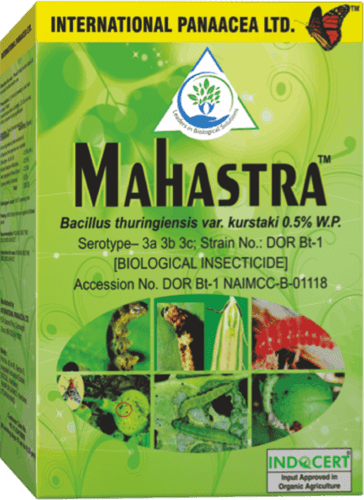
Mahastra – Bacillus thuringiensis (Wettable Powder) BioInsecticide (IPL)
Sold out
Price
Rs. 850.00
⚠️ Cash on Delivery is NOT AVAILABLE for this product.
✅ Genuine quality
🔒 Secure Payment
🚚 Fast Delivery
📦 Safe Packing
Target Crops:
Vegetables (Tomato, Cabbage, Cauliflower), Cotton, Pulses, Paddy, Chilli, Okra etc..
लक्ष्य फसलें:
सब्जियाँ (टमाटर, गोभी, फूलगोभी), कपास, दालें, धान, मिर्च, ओकरा आदि।
Method of application and dosage:
Foliar Spray – Take 5 to 10 gm. Mahastra per ltr of water. Spray with high volume knapsack sprayer or power sprayer with sticker at the appearance of insect pests mainly DBM (Diamond Back Moth) & Helicoverpa in Tomato & Cotton. Repeat the Foliar Spray at 10 days intervals
आवेदन और खुराक की विधि:
फोलियर स्प्रे - 5 से 10 ग्राम/प्रति लीटर पानी लें। मुख्य रूप से टमाटर और कपास में डीबीएम (डायमंड बैक मोथ) और हेलिकोवर्पा कीट कीटों की उपस्थिति में स्टिकर के साथ उच्च मात्रा वाले नैकपैक स्प्रेयर या पावर स्प्रेयर के साथ स्प्रे करें। 10 दिनों के अंतराल पर फोलियर स्प्रे दोहराएं
